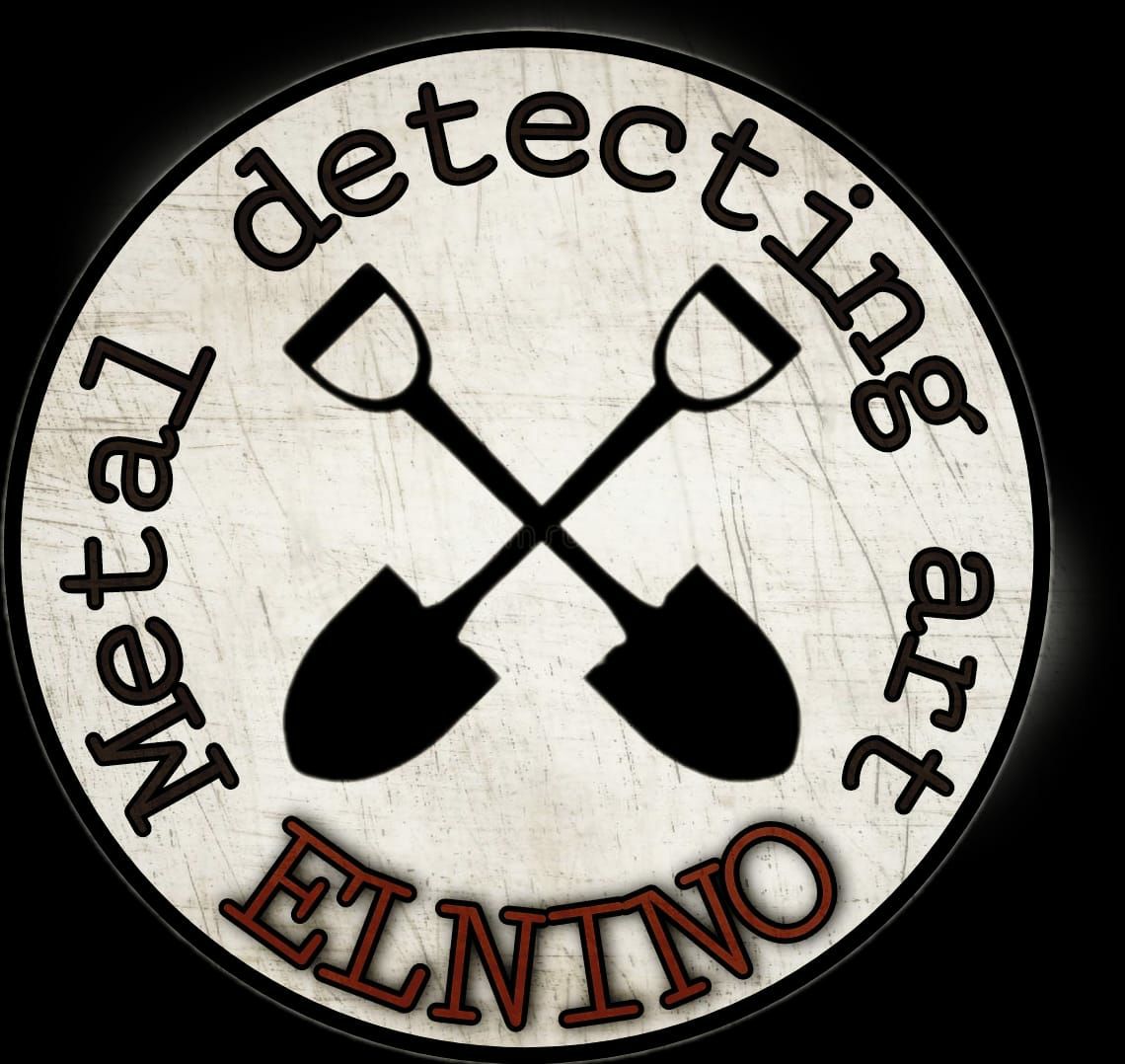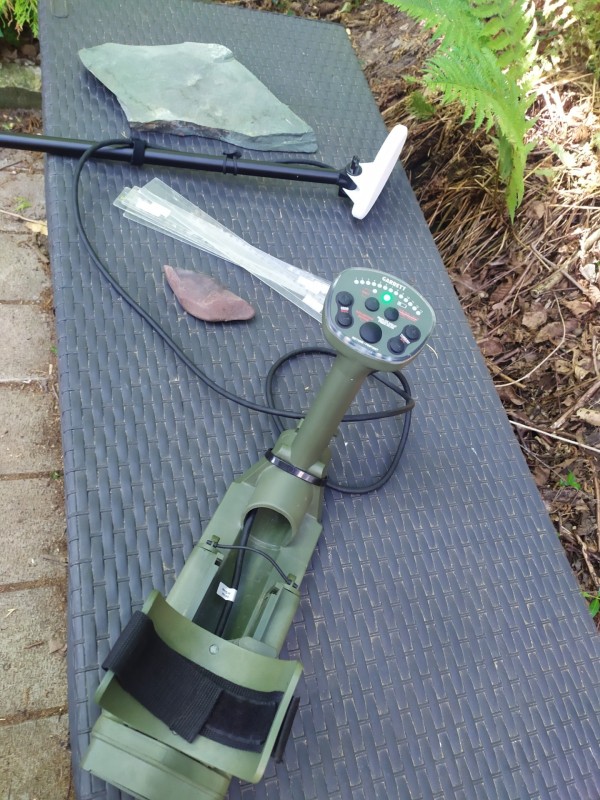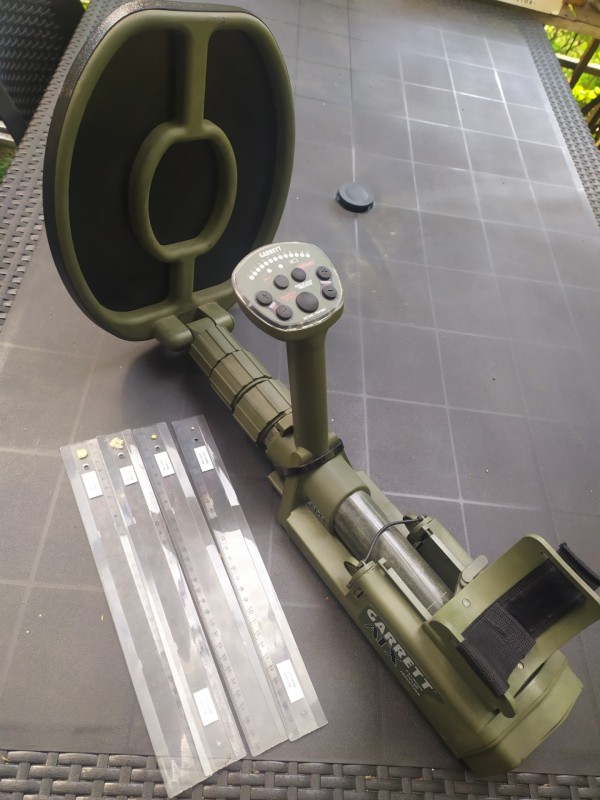-
Posts
1,337 -
Joined
-
Last visited
Content Type
Forums
Detector Prospector Home
Detector Database
Downloads
Everything posted by EL NINO77
-

Is The 8" Garrett Atx Mono Coil Worth It?
EL NINO77 replied to Lead Detector's topic in Garrett Metal Detectors
I came across a very interesting observation from my colleague Ricardo... about the stability of the ATX... and the fact... that it is good to change the batteries in the ATX even sooner... as the indicator will show... low battery... and then the detector will be stable work ...... And I'll admit that in a similar situation ... where replacing the ATX batteries also helped me... -

Need A New Pi For Beach Detecting
EL NINO77 replied to Hard Prospector's topic in Metal Detector Advice & Comparisons
Bklein, I think it could be an interesting topic for a new thread...which can further explain the differences between PI and VLF detectors in such demanding detection conditions ... -

Need A New Pi For Beach Detecting
EL NINO77 replied to Hard Prospector's topic in Metal Detector Advice & Comparisons
When I tested my detectors in 2021...on variously mineralized black sand.... I also did a few tests for 1 gram gold and gold 0.1 gram gold ...on a very concentrated box with Black Sand with 25% of magnetite in the sand mixture... You can see the results of some tests here: In addition to my VLF detectors, I used a PI Garrett ATX as a reference detector.. Minelab EQUINOX 800 MXT PRO... XP ORX -

Need A New Pi For Beach Detecting
EL NINO77 replied to Hard Prospector's topic in Metal Detector Advice & Comparisons
Bklein I was thinking about recovery speed..... at Manticore... Otherwise, various pinpointers are relatively resistant to the mineralization of the terrain, especially when they have GB adjusted to the terrain... -

Need A New Pi For Beach Detecting
EL NINO77 replied to Hard Prospector's topic in Metal Detector Advice & Comparisons
It shows a high concentration of magnetite in the sand...but not so high that it overloads the detector...,, maybe somewhere around 20% of the magnetite content in the sand...... How did you set the recvery speed on the Manticore?.. In any case... here you can see that the discrimination work of the VLF detector on such strong mineralization is no longer effective..but one of the possibilities is to use open discrimination and use it in a similar style as an all metal detector,,, -
-

New Rutus Detector Announced
EL NINO77 replied to xawi29's topic in Metal Detector Advice & Comparisons
Here is another from the test showing the "position"... of the Versa between the detectors.... -

New Rutus Detector Announced
EL NINO77 replied to xawi29's topic in Metal Detector Advice & Comparisons
-

Mixed Feelings On My New To Me ATX (problems Solved)
EL NINO77 replied to Lead Detector's topic in Garrett Metal Detectors
This ATX test is done on a 25KG bag of pure magnetite... you don't have a material that is more mineralized..It's all about learning and practice..... It's all about the correct setting of the PI ATX detector..for the given terrain....and the movement of the coil....and you have to learn that.. -------------------------------------------------------------------------- The second test of my ATX is on buried targets .. in a highly mineralized gold forest / 6-7bar Fe3O4...mineralization ...measured Tek.G2/ Note... the ATX response to the first buried target... a 1 gram gold bar at a depth of 20cm... it's really a reference target...!!! No VLF detector can reach this target in this field yet, except the MXT pro with a 13" ultimate coil.. at optimal settings.../neither Deus 2 nor Manticore yet/ --------------------------------------------------------------------------- Finally, let's see how the PI ATX detector copes ... with 0.1 grams of gold under highly mineralized iron stone ... no VLF detector is caught here ... -
Since the concentric coils for Atrex also work on multi-frequency...so the new concentric coils for VERSA will also work on multi-frequency... Other additional coils for VERSA are being worked on...
-
My experience tells me,,, that the concentric coil begins to have an advantage over the DD coil on a modern and very good separation detector ... only in the case,, when the concentric coil is smaller than the DD coil ... in my experience .... I see the ideal size of a concentric coil between 4.75" and 6".. or up to 7" coil diameter..
-
Let's look at the possibilities of both top Minelab detectors on large coils in comparison to 63 targets... It is also an excellent comparison of CTX and Manticore detection technology...
-
I have a different opinion on it.....just Minelab made a revolution by coming to the market with the Equinox detector, the affordable multi-frequency Equinox 800/600 detector.... If we look at the company Nokta, it also strongly models itself on this minelab Equinox model with its Legend detector... Another real revolution was made again by Minelab.. when it launched the Vanquish 340... a multi-frequency detector for 240 euros... Now to the main thing... and the main target... for every company that manufactures detectors is to make money... and according to that, this is how one company... It must always offer an interesting product for its price...
-
-

First Texas Finally Has A New Website
EL NINO77 replied to phrunt's topic in First Texas - Bounty Hunter, Fisher & Teknetics
I'm glad that Fisher is moving forward nice website...finally..many people are using Fisher/Teknetics detectors until now.. My favorite is the TEK G2... still a good detector... I think that Fisher is preparing new detectors... Relic & Deep-Seeking Detector CZ3D Fisher CZ3D BLÍŽENCI3 Fisher Gemini 3 -

New Rutus Detector Announced
EL NINO77 replied to xawi29's topic in Metal Detector Advice & Comparisons
JCR... detection without discrimination is similar to working on pseudo " All metal" with target recognition using audio tones - ferrous / non-ferrous targets....it's something that Rutus users have been using for a long time...something similar ..as when you use horseshoe with Equinox.. -

New Rutus Detector Announced
EL NINO77 replied to xawi29's topic in Metal Detector Advice & Comparisons
TEST of Rutus VERSA and new NC type software...specifically 2.37 NC/pre-production/ on the demanding Top Digin test field... Imagine for yourself what VERSA can detect on the new NC sofware... -

New Rutus Detector Announced
EL NINO77 replied to xawi29's topic in Metal Detector Advice & Comparisons
JCR....môžete napísať nastavenia VERSA na novom softvéri 2.44 NC, ktorý vám funguje?... Zaujíma ma to z viacerých pohľadov... Inak som rád ... že moje skúsenosti s testovaním VERSA na novom NC software sú potvrdené...,, a zhodujú sa s tým, čo mám tiež od VERSA pri detekcii... už dlhšiu dobu pri testovaní tohto nového NC softvér.. -
I think that Garrett has 2 possible paths in the field of... building coils for a PI detector... first... He can make other different sizes of "DoD" coils, which will be even more optimized for better reach for a certain size of gold..." remember that these coils combine the benefits of the DD coil in mineralization with the reach of targets... as well as they have the same sensitivity as a concentric coil for small targets... 2 Another way is the possibility to go the way with small coils of the classic DD type .. as was the case with the small 3X7" and 5X10" DD coils for the PI Infinium ..
-

New Rutus Detector Announced
EL NINO77 replied to xawi29's topic in Metal Detector Advice & Comparisons
Presentation of the New NC software 2.44 NC .. for the Rutus VERSA detector.. New Software 2.44 NC...presented by the Chief Tester of Rutus detectors ...Artur Troncik .. "SAPER" ...and the designer and also the owner of the company Rutus ...Arkadiusz Rutyna .."RUTUS" -
The use of detectors with a very high frequency of over 30 kHz...also brings the difficulty of setting the detector to a highly mineralized magnetic/magnetite terrain with 4-5% or more percentages of magmetite in the terrain/..because extra high frequencies are much more sensitive to this type of mineralization terrain... Hematite/iron terrain is not so sensitive to high frequencies and there high frequencies can work more stably/ similarly it is also in terrain that contains corroded iron... and there these high frequency detectors achieve good results... 74khz VS 14.4khz ..note the stability of the detector at 14.4khz VS 74khz when I pass the coil around the edge of the black sand container...where there is no target...!!!
-
I don't want to believe that it is Minelab....in my opinion, as an entry level detector, they should have upgraded their entry level detector Go find /120 eur/, or Vanquish 340/230 eur/..
-

Selectable Frequencies Or Smf
EL NINO77 replied to HardPack's topic in Metal Detector Advice & Comparisons
The basic idea of using multi-frequency 1st generation... was primarily about mastering specific terrain conditions, such as salt water, conductive terrain, or specially mineralized terrain. among other things, the multi-frequency of the 1st generation also brought a certain accuracy in displaying the ID... which, however, did not have to be very accurate in highly mineralized terrain... we include here Fisher Cz, Minelaby type Fbs, Whites Spectra V3 and DFX detectors.. That was the main advantage of the multi-frequency of the 1st generation compared to detectors working on 1 frequency... which did not have to work correctly on some difficult terrains...,, Let's also mention a certain disadvantage of multi-frequency detectors of the 1st generation... and that is not a good enough separation in iron... and here in many cases they were better in such separation in iron... fast - 1-frequency detectors... Another significant advantage of 1-frequency detectors /many gold detectors/ also had greater sensitivity and depth to very small targets weighing 0.3 grams and less...compared to multi-frequency detectors of that time... none of the multi-frequency detectors of that time were intended to detect gold as the main detector...on it intended.. The 2nd generation of multi-frequency detectors greatly improved detection and depth on small targets/low visibility targets/ as well as further improved the detection properties and accuracy of VDI targets on various types of terrain... the separation characteristics of detecting targets in iron have also improved very significantly, even to the level of excellent single-frequency detectors There was also a significant improvement in the detection of extremely small targets, and thanks to this, these detectors can also be used very effectively in the detection of natural gold... Here we can include Minelab Equinox, Manticore, Garret Apex Nokta Legend and Rutus Atrex and Versa multi-frequency detectors... ...Multifrequency detectors of the 2nd generation also brought the possibility of using 1 frequency as an alternative option in detection..thanks to what they gained in great universality...



